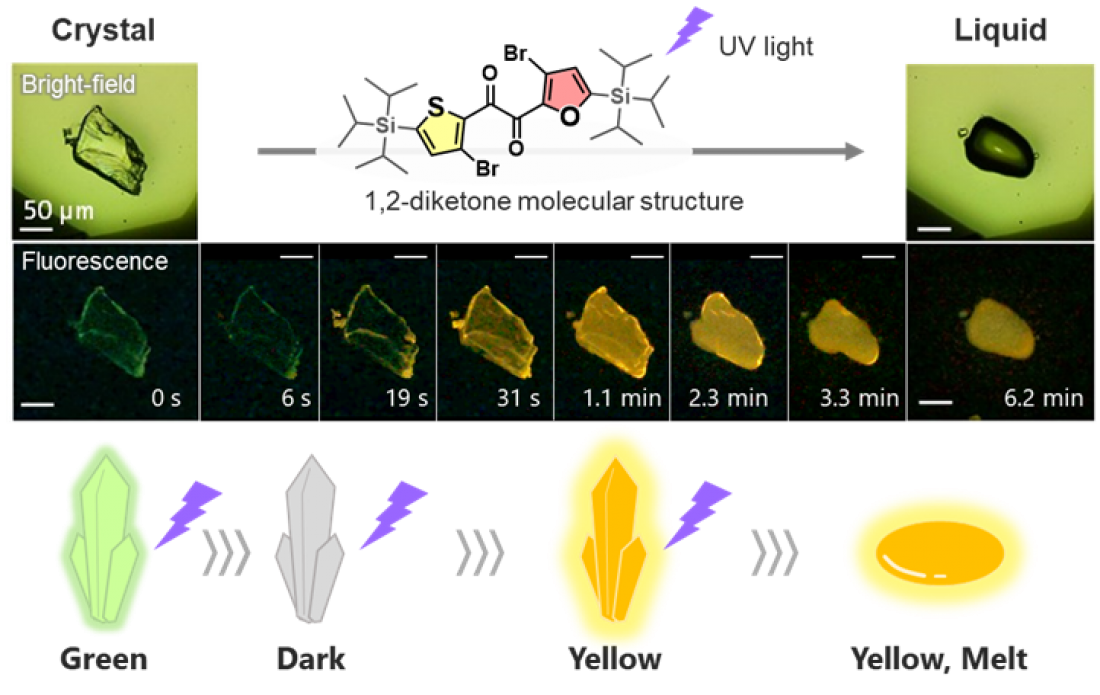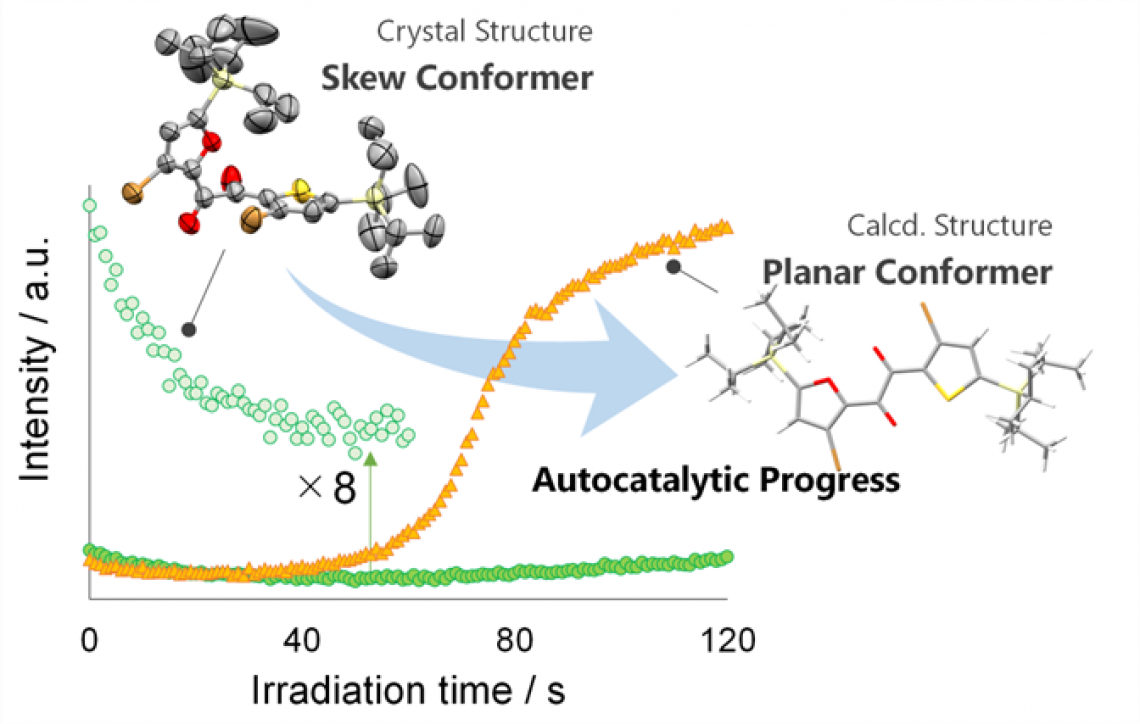Fig. 1
Photo-induced crystal melting with luminescence evolution
Researchers from Osaka University discover a novel material that transitions from a crystal to a liquid and exhibits changes in luminescence when exposed to ultraviolet irradiation, enabling a molecular-level visualization of the crystal-melting process
Osaka, Japan – While many materials melt when heated, researchers from Japan recently discovered a novel material in which melting can be induced by ultraviolet light instead of being induced only by heat. Even more intriguing, this material exhibits changes in its luminescent properties while it melts. This material is the first organic crystalline material found to show changes in luminescent color and intensity upon ultraviolet light-induced melting.
In Chemical Science, investigators from Osaka University reported their discovery of a new class of photo-responsive crystal compounds, ‘heteroaromatic 1,2-diketones’. Light irradiation causes the crystals in these materials to melt, a phenomenon termed photo-induced crystal-to-liquid transition (PCLT).
This phenomenon can dramatically change a material’s properties and makes possible a broad range of applications, for example, photo-responsive, reversible adhesives that could be controlled by light. Few materials have been shown to have this crystal-melting property; hence, the discovery of a new class of PCLT materials is a great step forward in this field.
In characterizing their newly discovered class of PCLT materials, the researchers found that one member of this class, the diketone ‘SO’, shows changes in luminescence during the irradiation-induced melting process. “This is the first organic crystal we know of that exhibits a luminescent evolution during crystal melting, showing changes in intensity and color, from green to yellow,” says lead author Mao Komura.
These changes in luminescence, i.e., changes in the way the material absorbs and emits light, indicated that SO was undergoing molecular-level changes in shape during the PCLT process. Building upon past research on luminescent molecules, the research team realized they could further investigate these molecular-level changes underlying PCLT to better understand the crystal-melting phenomenon.
Fig. 2
Autocatalytic conformation change
“We found that the changes in luminescence arise from sequential processes of crystal loosening and conformational changes prior to melting,” explains senior author Yosuke Tani. “These visual indications of the steps of the PCLT process enabled us to advance the current understanding of crystal melting at the molecular level.”
By applying single-crystal X-ray analysis, thermodynamic property analysis, and theoretical calculations to probe the mechanisms governing the behavior of this new PCLT material, the researchers demonstrated that a disordered layer in the crystal is a key factor for PCLT in this class of materials.
This discovery of a novel PCLT material, along with its characterization, provides fundamental insights into the mechanism of crystal melting and will enable greater opportunities for designing PCLT materials with a variety of applications, including photolithography, thermal energy storage, and light-induced adhesion.
###
The article “Photoinduced Crystal Melting with Luminescence Evolution Based on Conformational Isomerisation” will be published in Chemical Science at DOI: https://doi.org/10.1039/D3SC00838J
About Osaka University
Osaka University was founded in 1931 as one of the seven imperial universities of Japan and is now one of Japan's leading comprehensive universities with a broad disciplinary spectrum. This strength is coupled with a singular drive for innovation that extends throughout the scientific process, from fundamental research to the creation of applied technology with positive economic impacts. Its commitment to innovation has been recognized in Japan and around the world, being named Japan's most innovative university in 2015 (Reuters 2015 Top 100) and one of the most innovative institutions in the world in 2017 (Innovative Universities and the Nature Index Innovation 2017). Now, Osaka University is leveraging its role as a Designated National University Corporation selected by the Ministry of Education, Culture, Sports, Science and Technology to contribute to innovation for human welfare, sustainable development of society, and social transformation.
Website: https://resou.osaka-u.ac.jp/en




